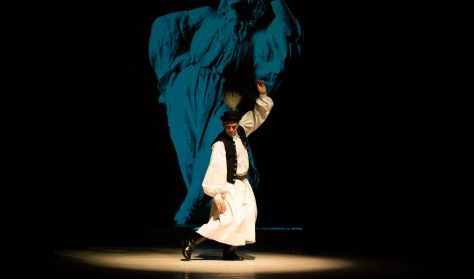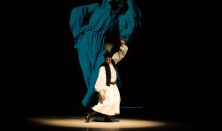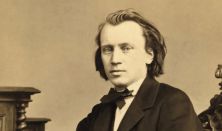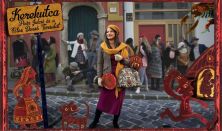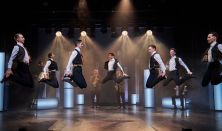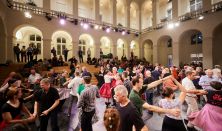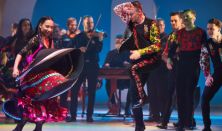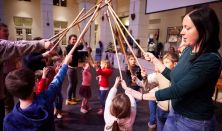"Recruitment Songs" (verbunks) conjures up the Age of Romanticism and national revival in Hungary. The contemporary society created "national" forms of music and dance through a process of countrywide "globalization". This resulted in a common dance dialect that existed above the different traditions of various regions. During this process, the tastes and fashions of different social strata were unified through the careful mediation of contemporary dance gurus. This performance is a memorial to the development of the "national dance" and its survival in folk tradition.
In the first part, archaic dance forms (jumping dances, whirling dances, pair dances, and military dances) are shown. These in turn were used as source material during the unifying programs of the Romantic Movement.The "verbunk" (recruitment dance) developed from archaic men's dances, whilst the "czardas" developed from the closed, whirling, stooping and cajoling couple dances, which appeared during the 16th and 17th centuries in the Carpathian Basin. Thus, the verbunk and czardas are combinations of past forms. The reinterpretation of such forms meant the synthesis of Hungarian dance figures and styles into a form that expressed the Romantic Age and the development of national identity in Hungary.
At first the development of the czardas signaled the awakening of national identity in the more narrow upper levels of society, but later, after the defeat of the 1848 Hungarian War of Independence, it stood for the awakening of a much broader social strata: even the word czardas (from csárda, "inn") has its roots in the language of common people. The influence of this dance lives on today in both Hungary and the neighboring countries.
The second part of the show gives us a taste of this variety, showing us the different folklorized versions of the former national dance.
The most common musical performers of the age were the gypsy bands. The orchestra of the Hungarian State Folk Dance Ensemble plays a dual role: in addition to performing the music accompanying the dances, it gives voice to independent concert pieces from the period as well.
Choreographers: Zsolt Juhász, Zsolt Szilágyi, Zoltán Varga
Musical Editor: László Kelemen
Costume: Beáta Lőrincz
Set Design: László Érchegyi
Conductors/Lead fiddlers: Ferenc Radics , István Pál , Tamás Gombai
Solo singer: Ágnes Herczku
Dance Instructor: Richárd Kökény ("Harangozó Gyula" Award)
Assistants: Beatrix Borbély , Katalin Jávor , Péter Varga
Performed by
the Dance Ensemble and Orchestra of the Hungarian State Folk Ensemble
Artistic Director: Gábor Mihályi ("Harangozó Gyula" Award, "EuróPAS" Award)
Special thanks to Jolán Borbély, Dr. Ernő Pesovár and Dr. Bálint Sárosi for their professional advice.
